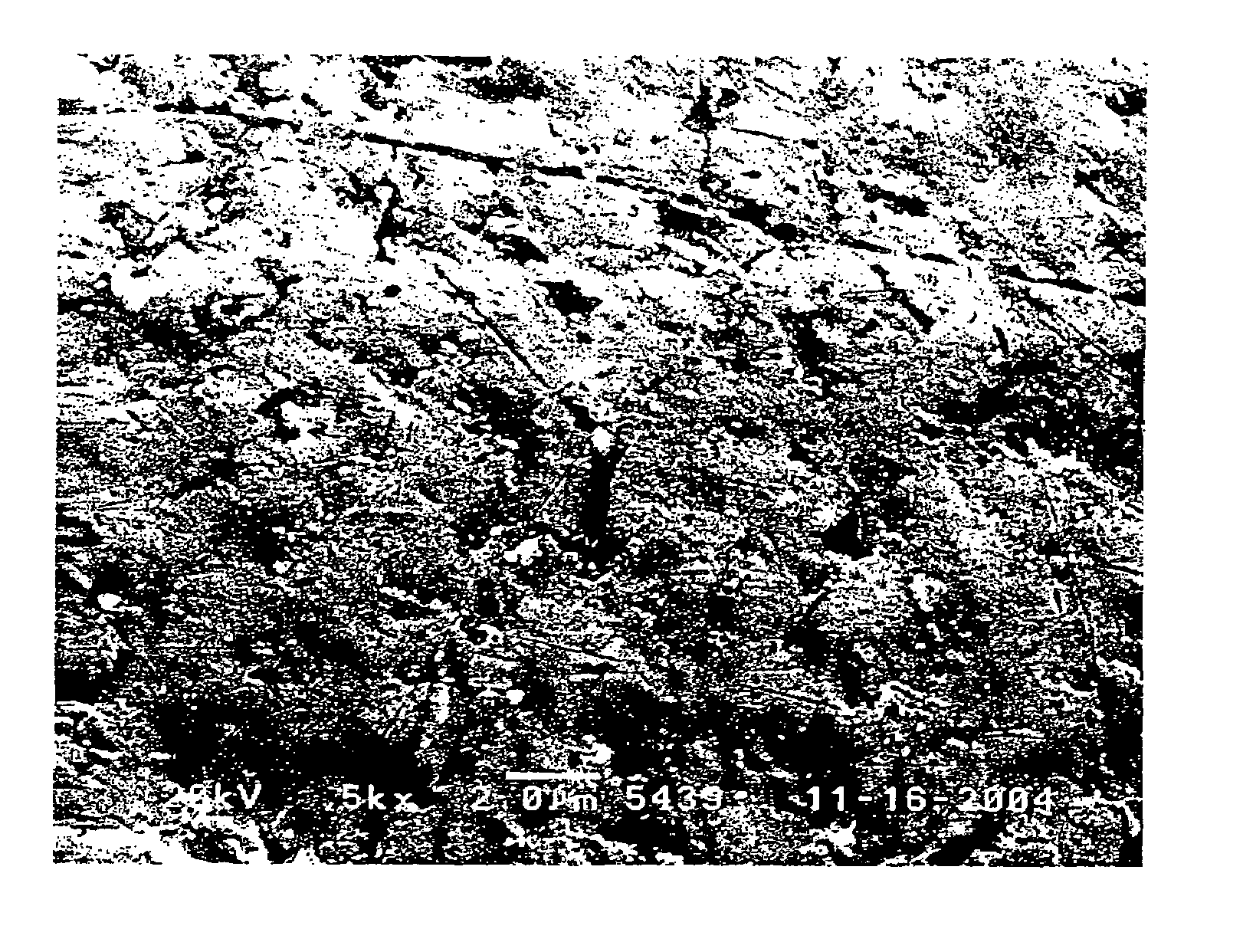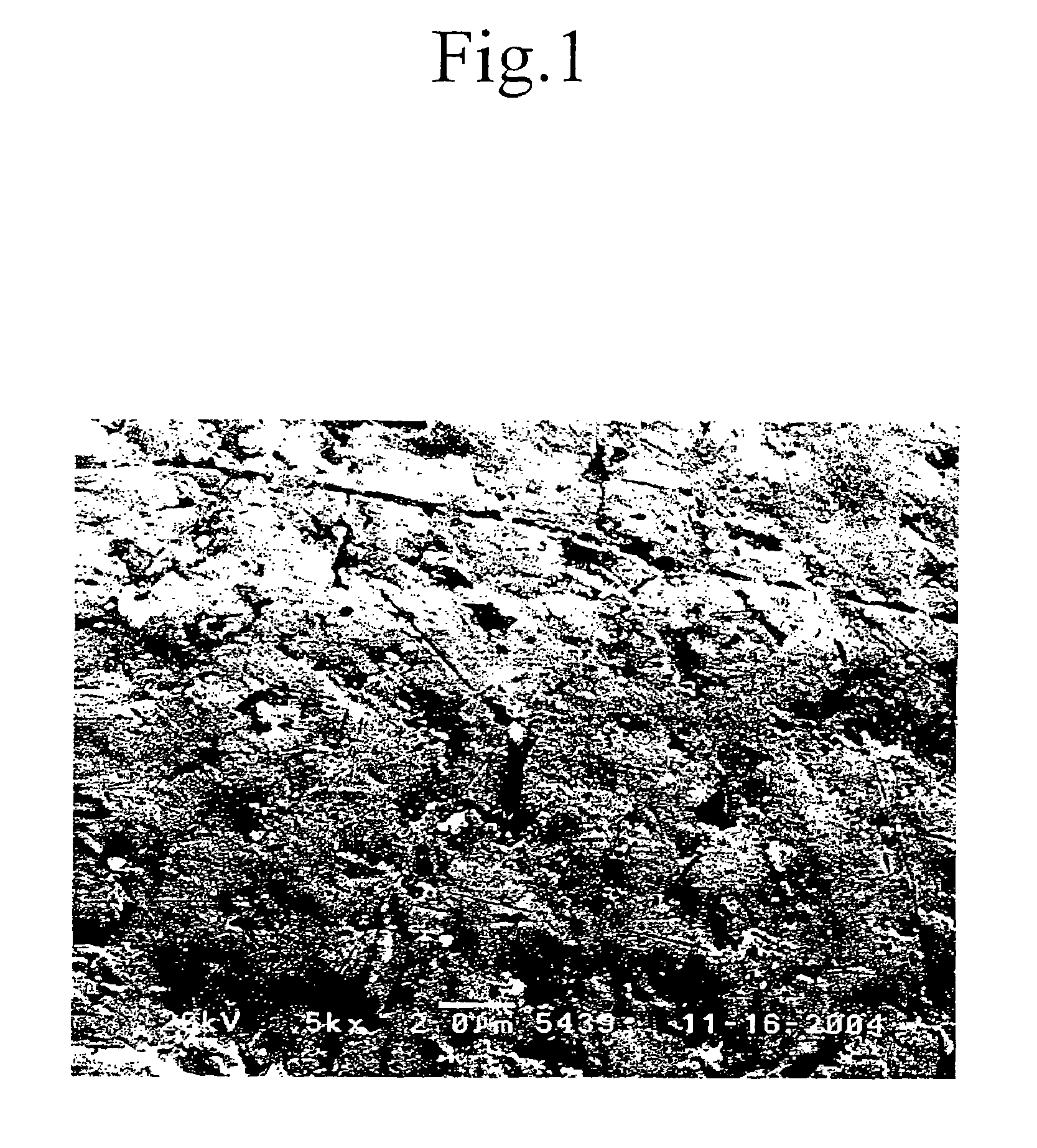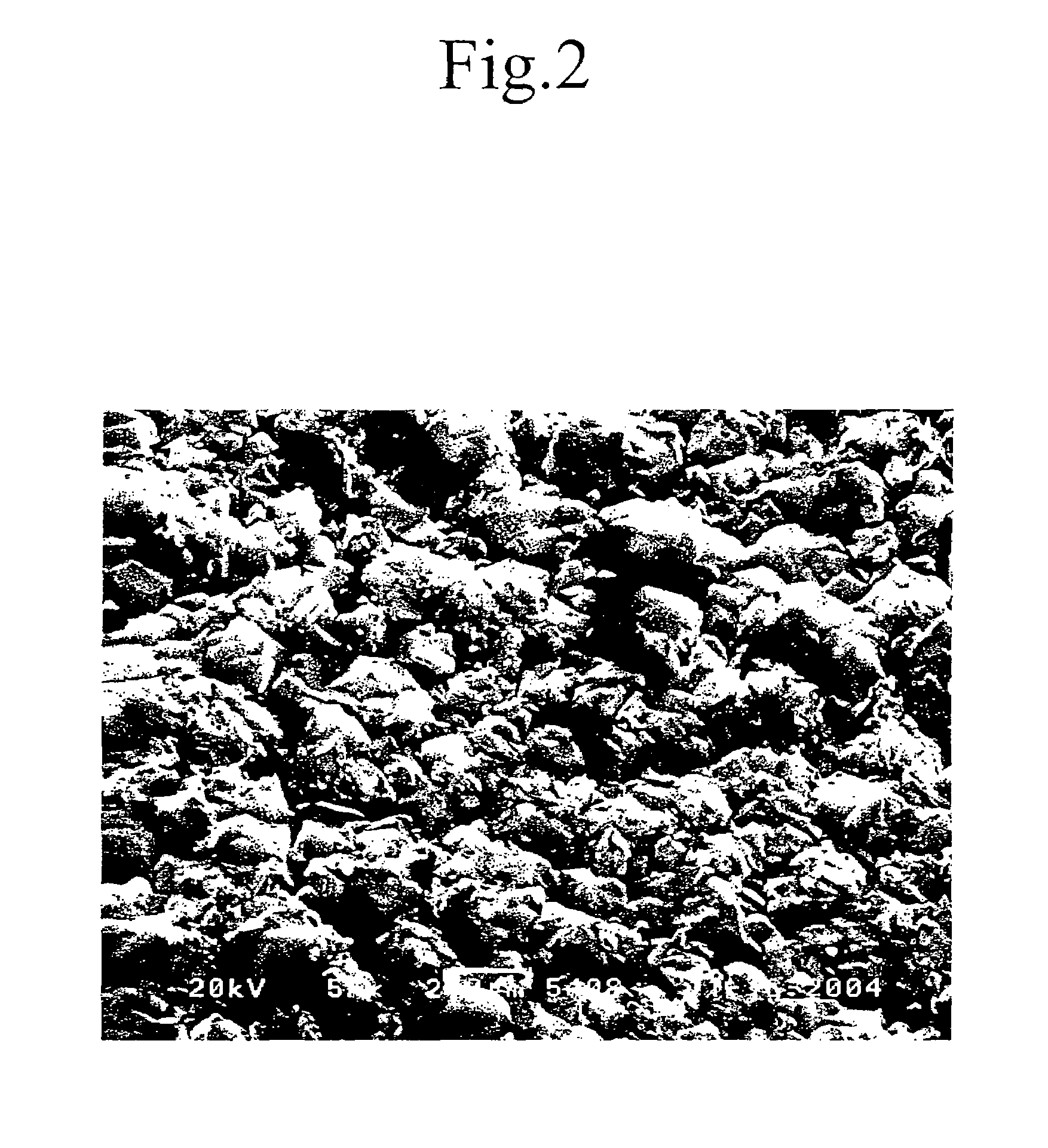Cutting tool having high toughness and abrasion resistance
a cutting tool and high toughness technology, applied in the direction of superimposed coating process, other chemical processes, instruments, etc., can solve the problems of low toughness of the coated cutting tool, drastically decreasing and reducing the life of the tool. , to achieve the effect of inhibiting chipping and flaking, high toughness
- Summary
- Abstract
- Description
- Claims
- Application Information
AI Technical Summary
Benefits of technology
Problems solved by technology
Method used
Image
Examples
example 1
[0028](A) On a cemented carbide substrate for use in a coated cutting tool, corresponding to a grade of ISO K10, a 10.0 μm thick TiCN film, a 5.0 μm thick α-Al2O3 film, and a 1.0 μm thick TiN film were sequentially deposited by means of MT-CVD, to obtain a coated cutting tool.
[0029]The resultant coated cutting tool was subjected to wet blasting using 10-300 μm sized alumina (Al2O3) particles at a pressure of 0.5-5.0 bar.
[0030](B) On a cemented carbide substrate for use in a coated cutting tool, corresponding to a grade of ISO K10, a 10.0 μm thick TiCN film, a 5.0 μm thick α-Al2O3 film, and a 1.0 μm thick TiN film were sequentially deposited by means of MT-CVD, to obtain a coated cutting tool.
[0031](C) On a cemented carbide substrate for use in a coated cutting tool, corresponding to a grade of ISO K10, a 10.0 μm thick TiCN film, a 5.0 μm thick α-Al2O3 film, and a 1.0 μm thick TiN film were sequentially deposited by means of MT-CVD, to obtain a coated cutting tool.
[0032]The resultant...
example 2
[0038]Abrasion resistance of the cutting tools manufactured as in Example 1 was measured. To this end, the same workpiece was processed for 20 min, and an abrasion amount generated on a flank of the tool was measured, and a fraction of the coating film flaked away at a cutting edge thereof was analyzed. The results are shown in Table 2, below.
[0039]—Assay Conditions of Abrasion Resistance—
[0040]Cutting Conditions: V=400 m / min, f=0.3 mm / rev, d=2.0 mm, wet processing
[0041]Workpiece: GC25 (diameter 300 mm, length 600 mm) outer diameter processing
[0042]Tool Number: CNMG120408-GR
[0043]
TABLE 2SampleFlaking (%)Abrasion Amount of Flank (mm)InventiveA00.125ConventionalB900.155ConventionalC700.145
[0044]As is apparent from Table 2, the coated cutting tool (A) of the present invention has higher chipping resistance and abrasion resistance than the conventional cutting tools (B) and (C).
example 3
[0045]The toughness of the coated cutting tools fabricated in Example 1 was measured. To this end, a cylindrical steel having four longitudinal grooves was cut, in which a limited feed rate was measured while a cutting speed and a depth of cut were constant and a feed rate was changed, and breaking resistance was measured while a cutting speed, a depth of cut and a feed rate were constant and the time required to break the tool was measured. The results are shown in Table 3, below.
[0046]—Assay Conditions of Limited Feed Rate—
[0047]Cutting Conditions: V=150 m / min, f=0.1-0.3 mm / rev, d=2.0 mm, dry processing
[0048]Workpiece: SCM440-4 grooves (diameter 300 mm, length 600 mm) outer diameter processing
[0049]Tool Number: CNMG120408-GR
[0050]—Assay Conditions of Breaking Resistance—
[0051]Cutting Conditions: V=210 m / min, f=0.175 mm / rev, d=2.0 mm, dry processing
[0052]Workpiece: SCM440-4 grooves (diameter 300 mm, length 600 mm) outer diameter processing
[0053]Tool Number: CNMG120408-GR
[0054]
TABLE...
PUM
| Property | Measurement | Unit |
|---|---|---|
| surface roughness | aaaaa | aaaaa |
| thickness | aaaaa | aaaaa |
| pressure | aaaaa | aaaaa |
Abstract
Description
Claims
Application Information
 Login to View More
Login to View More - R&D
- Intellectual Property
- Life Sciences
- Materials
- Tech Scout
- Unparalleled Data Quality
- Higher Quality Content
- 60% Fewer Hallucinations
Browse by: Latest US Patents, China's latest patents, Technical Efficacy Thesaurus, Application Domain, Technology Topic, Popular Technical Reports.
© 2025 PatSnap. All rights reserved.Legal|Privacy policy|Modern Slavery Act Transparency Statement|Sitemap|About US| Contact US: help@patsnap.com



